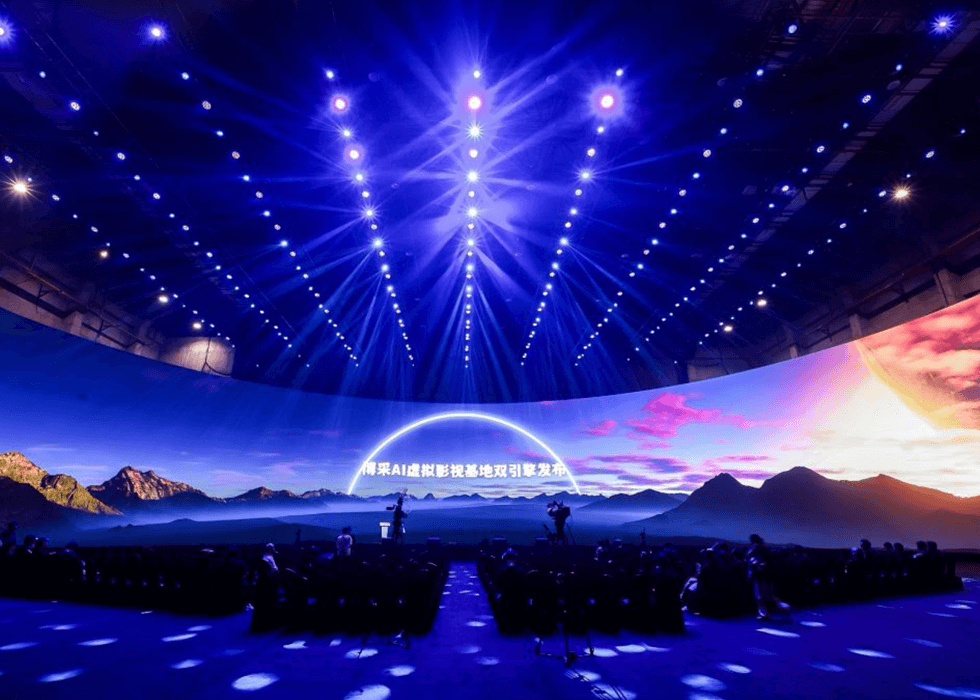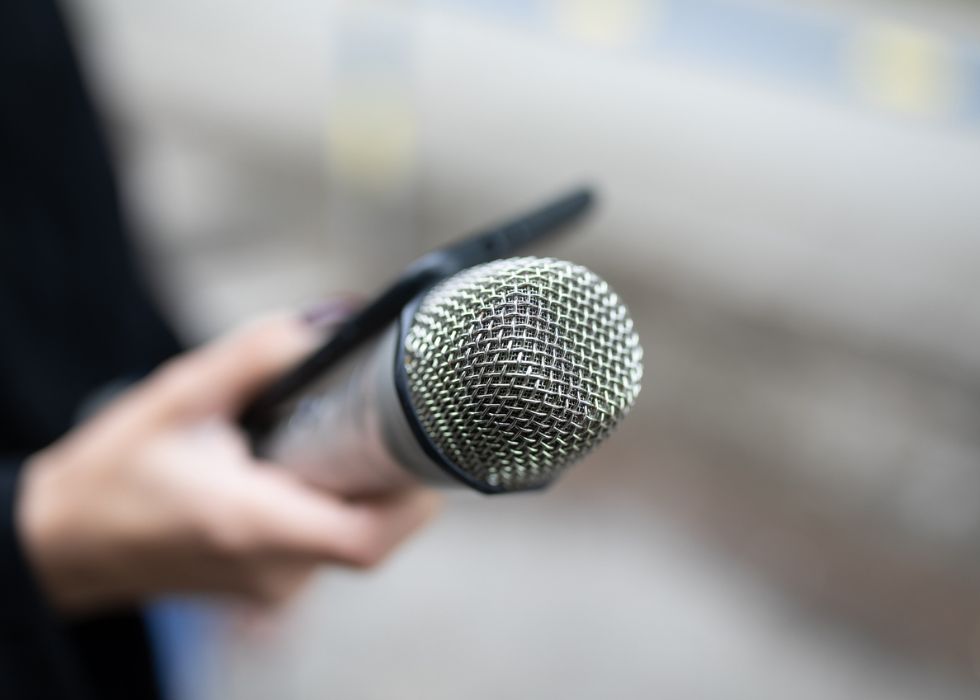Super Bowl Sound is a Fan Favorite
by Kirsten Nelson, Special to AVIXA
To the rest of the world, it’s a mystery. A complete unknown accompanied by wild speculation right up until the athletes leave the field and artists storm onto it. It’s the Super Bowl halftime show, and its producers aim to deliver a more elaborate surprise every year.

Fortunately, the NFL has partnered with some very tight-lipped show production specialists who faithfully maintain embargoes as they collaborate on audio, video, lighting and staging over months in advance of the big game. After all, they’re as invested in the spectacle as anyone. Many of these secret-guarding live event specialists are Super Bowl veterans who maintain long working relationships with the NFL as it continues to evolve its multi-dimensional, multi-platform fan engagement offerings.
As it happens, sometimes even the headliner is a veteran, as was the case for tor the 2018 Super Bowl LII Pepsi Halftime Show at U.S. Bank Stadium in Minneapolis, Minnesota. In his record-setting third appearance as a part of the sports world’s largest live entertainment spectacle, Justin Timberlake made the stage his own. His creative team collaborated on a halftime show designed by Bruce Rodgers of Tribe and visual creative lead Fireplay, with lighting design by Bob Barnhart of 22 Degrees with PRG, video by VER and staging by All Access Staging and Production.
The show was a medley of Timberlake classics and new sounds from an album that was released days before his halftime performance. But maybe most significantly, the show included a tribute to Minneapolis’ late hometown icon (and some would say the best ever Super Bowl halftime artist) Prince. The somewhat controversial tribute took the form of Fireplay’s towering video projection of archival Prince footage illuminated on a flowing silk scrim, while Timberlake sang a “duet” with recordings of “I Would Die 4 U” and “Until the End of Time.”
Technically, the show went off without a hitch. Sonically, it was great, as two of the Super Bowl’s long-term production partners ATK Audiotek and Professional Wireless Services were once again handing the entertainment and game audio.
Year-Round Preparations
A year before the lights went up on Timberlake, work began on the live sound setup for his performance and the game-day audio. Beginning the day after 2017’s big game, ATK Audiotek conducted its post-event evaluation and made a list of possible changes and improvements. A few months later, in June 2017, the team traveled to U.S. Bank Stadium to measure and analyze the in-house sound and create initial predictions for the live rig they’d bring in for Super Bowl LII on February 4, 2018.
The final phase of what is essentially a year-round occupation for ATK Audiotek commences a few weeks before the main event, when ATK arrives on site to do setup and final system tuning. Time is always tight, and the processes are frenetic, but circumstances leading up to Super Bowl LII were particularly interesting, and U.S. Bank Stadium’s primary tenant, the NFL’s Minnesota Vikings, were in the NFC Championship finals. That meant they were playing in the stadium right up until their divisional round victory against the New Orleans Saints, three weeks before the Super Bowl.
ATK Audiotek’s Engineer in Charge, Kirk Powell, had to laugh as he recalled the situation. “I never object to the home team being in the Super Bowl, but I object to them playing in the playoffs,” he chuckled. “We lose time, we lose days, and that makes it hard. It’s not insurmountable. We still had time, but it was tight, because we get there two-and-a-half or three weeks before the game. Everything needs to be set up one week before game for rehearsals.”
Systems Check
About ten days before the game, with the gear in place, ATK’s Scott Harmala and Jack Bowling began the final system measurements and tuning. With the tightened timeline this year, Powell said, “They powered through it so we were ready for rehearsals.”
To provide a concert-level experience for the halftime show and a growing list of other live entertainment events sprinkled throughout the Super Bowl schedule, and to support audio for the game itself, ATK brings in a full PA setup to augment the in-house audio system that supports regular game-day programming. “We do all the sound,” Powell explained. “We take over the house system on game day to make sure the entire event lives up to NFL standards for the Super Bowl.”
To match these the live PA and in-house systems, ATK sent in specialists Scott Harmala and Jack Bowling ten days before the Super Bowl to perform a complete system tuning of the in-house setup and time align it with the cart speakers. The live rig was also precisely tuned for the venue. The in-house technology was used for the game, while the blended system supported entertainment sound.
When halftime begins, the extremely swift transformation from athletic field to concert venue takes place. The entertainment PA speakers are rolled out on ATK’s customized system of carts, which are precisely positioned around the field’s perimeter. These are aimed at the lower seating areas and suites up through the 200-level seats, sending sound to the crowd in a pattern that reduces reflection from a stadium’s inevitably hard reflective surfaces.
This year, ATK implemented what Powell described as “big, critical changes in the way that we tuned the systems together, and the way that we’re distributing the audio.” The changes were due in part to U.S. Bank’s comparatively small size, and the limited sideline space for coiled cables and outboard gear. There was limited room for storage even in the service tunnels, and the usual equipment compound and truck village that lives outside stadiums was non-existent in Minneapolis, as U.S. Bank Stadium is one of few not to be surrounded by parking lots.
Fortunately, technology came to the rescue to solve the issues with limited real estate. The challenges prompted ATK to reduce its system footprint with more elaborate use of digital networking technology. This cut down substantially on cabling that normally would have been coiled on the field. The digital setup was connected by “just a couple of fiber optic cables instead of W2 and W4 cables,” Powell explained. “And there were not a lot of spokes running out from one location, which was a big advantage. It gave us a lot of flexibility. We could change patching on the fly without having to run additional cables.”
With everything set and ready to go, it was finally showtime. Bowling took his position to run game audio, while ATK’s Alex Guessard was on deck to mix the entertainment sound.
Make the Call
Key to both the in-venue sound and broadcast is ATK’s most venerable task: the referee mic.
“The ref mic is ours,” Powell explained. “We supply that, we put it on the ref, we manage the whole thing, every time you hear it. It’s one of the highest priorities of the entire event. The entire audience, everybody in the press box, and all the coaches want to hear what’s being said. It affects the outcome of the game. That is one of the most critical elements of the entire game, and it falls in our lap to make it work.”
Powell described the all too common occurrence of stadium systems feeding back when the ref mic goes live. “That sounds really bad, especially on air,” he commented. “We try to avoid that. Jack [Bowling] has become a master of being able to really and keep it coming off the field and make it sound great.”
At Super Bowl LII, Bowling did achieve greatness. “The ref mic was coming through loud and clear, there was no question about what he was saying,” Powell described. “It was almost too loud in the stands, but I’m more sensitive than the average audience member. It had tons of gain, no feedback, and it sounded really good.”
Even with the intense lead-up to a Super Bowl hosted in a venue where the home team almost achieved the historic feat of playing the big game at home, all in all, things went well on game day.
“We felt very good about the way the whole day went,” Powell said. “It’s probably the most relaxed Super Bowl I’ve ever had. We felt very confident. Everyone did their job to an unbelievable level, and the day went great. I slept well that night.”
Then the next day, Powell and the ATK Audiotek team took stock of Super Bowl LII, made a list of areas for changes and improvements, and started looking ahead to 2019 at Mercedes-Benz Stadium in Atlanta, Georgia.
“Every year is different, because every stadium has unique issues that make us rethink the way we do the event,” Powell said. “Next year, we have no idea what Atlanta is going to bring, but we look forward to the challenge.”






